
Why The Cajón Is The Heart Of Afro-Peruvian Musical Heritage
The Afro-Peruvian cajón was created by enslaved Africans to emulate African drums. Today, it's one of the most important cultural symbols.
Brunno Braga • Jul 20, 2021
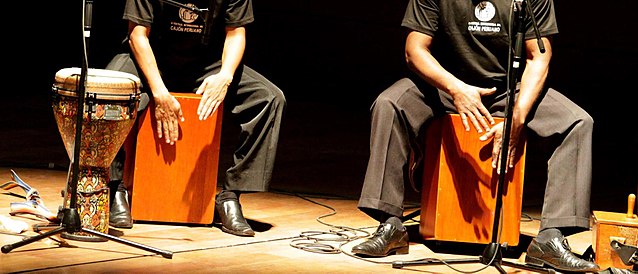
Barrios Altos, La Victoria, and Malambo are Lima’s main historical Afro-Peruvian neighborhoods. It’s in these areas where the callejones can be found. In those same narrow streets is where people often gather in the evenings around a guitar and the popular Afro-Peruvian cajón, a box-shaped percussion instrument.
These historically Black Peruvian neighborhoods have an important place in the South American country’s collective imagination due to the rhythms and the tunes that originated there. The story goes that it is where the Afro-Peruvian cajón also has its roots.
In fact, the cajón was created by enslaved Africans during the first three decades of the country’s republic. As a way to emulate African drums, Afro-Peruvians used the wooden crates often used to transport merchandise, as a percussion instrument, using them in their sacred rites and in their different artistic manifestations.
Since then, the cajón has become one of the most important Afro-Peruvian identity symbols, even to this day.
El Festejo is one of the most popular Afro-Peruvian rhythms that uses the cajón. The traditional El Festejo is danced in homes and on the streets of coastal towns, especially in Cañete, Chincha, Pisco, Ica and Nazca, where it is performed only to the rhythm of the cajones, just as enslaved Black men and women danced.
“Peru has an “official history” that excludes Afro-Peruvians from their country’s past. There is also a lack of recognition of their contribution. In the case of the cajon this contribution is clear, convincing and indisputable. The cajon is a real and vital element in the resistance of Afro-Peruvians,” Rafael Santa Cruz told Andina, a Peruvian media outlet.
Santa Cruz was one of the most prominent Afro-Peruvian actors and musicians. He died in 2014 at the age of 53.
In 2001, the cajón was officially recognized in Peru as a “Cultural Heritage of the Nation.”
Subscribe to travel noire
Get more travel content
Subscribe to Travel Noire, a free daily newsletter that features the best of travel, destinations, and guides to the cities you love from a new point of view — yours.
By subscribing to this newsletter, you agree to our terms of service and privacy policy.
Popular posts
Trending stories in world travel

- Licensee Program
- Film in Peru
- Ambassadors
- Amigos del Peru
Foreign Trade
- Superfoods Peru
- Alpaca del Perú
- Coffees from Peru
- Pisco Spirit of Peru
- Commercial Offices of Perú
- World Heritage
- Wonder of moder world
- Natives Products
- Regional Peruvian Cuisine
- Restaurants in the world
Investments
- Art and Culture
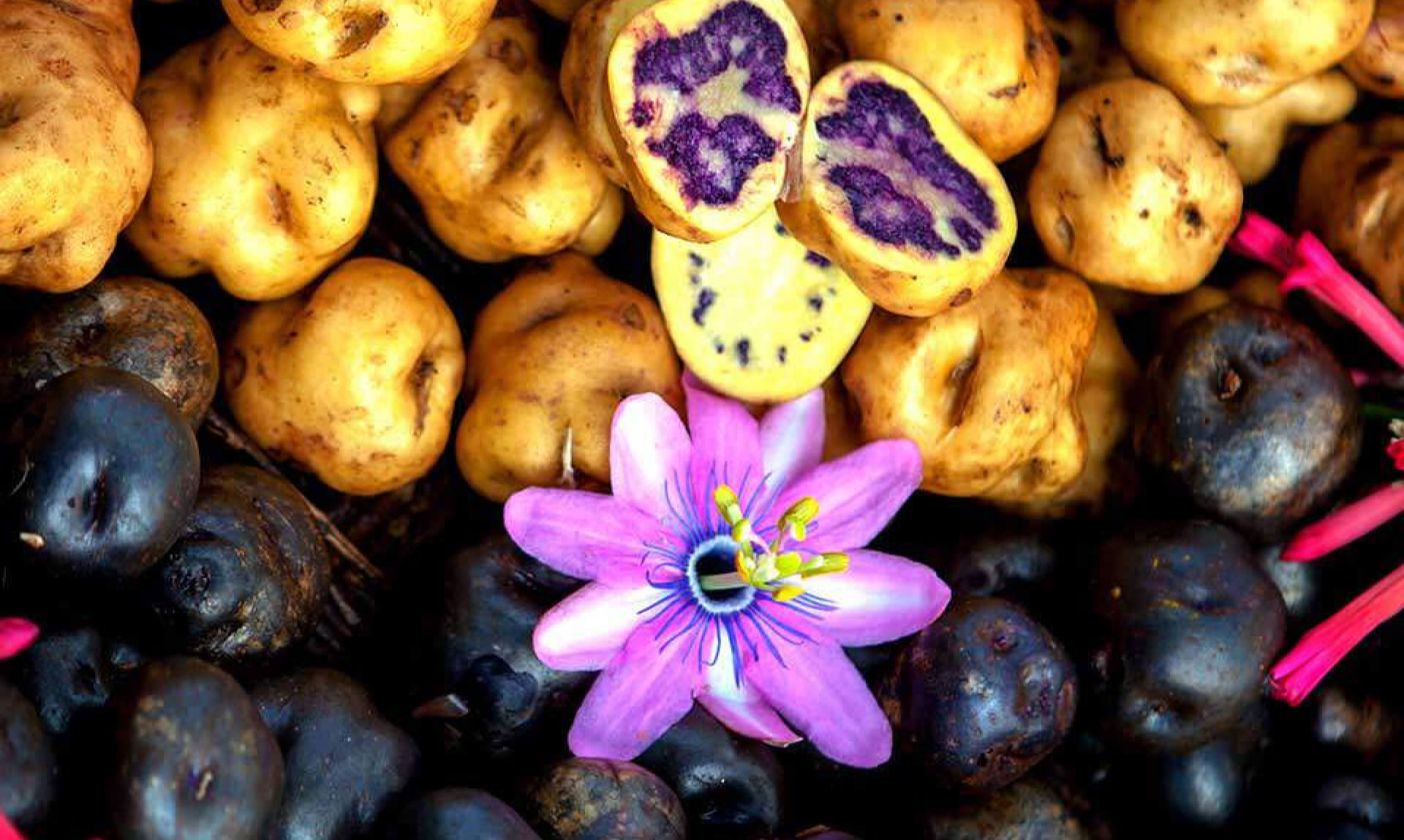
Find what you want
Peruvian Cajón: the history and importance of one of the most surprising instruments in the world
Google news.
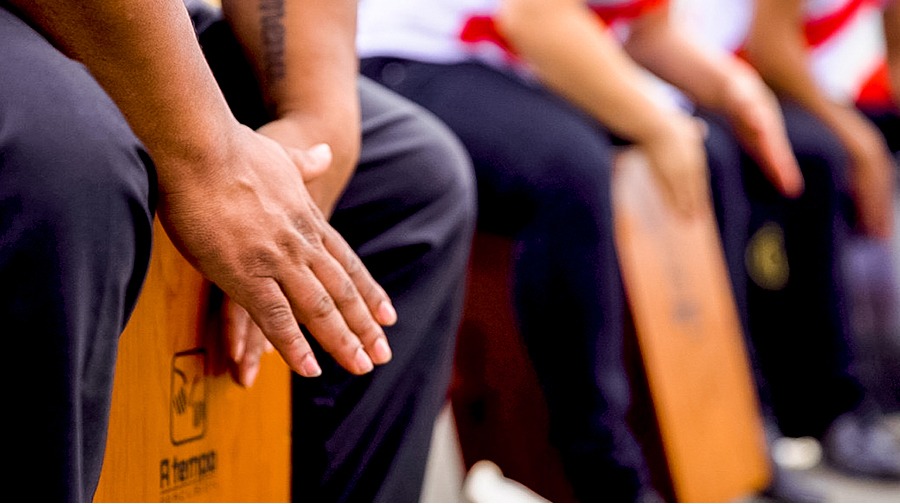
Fuente: Diffusion
His Majesty, the cajón. That is the title that the famous decimista (traditional Peruvian poet) Nicomedes Santa Cruz gave to this musical instrument, whose melody became one of the greatest pleasures of the hundreds of African slaves who arrived in Lima during the time of the conquest.
The rhythm of nostalgia
This instrument, today considered to be National Cultural Heritage, was developed in the mid-sixteenth century as a means for slaves to preserve their roots. The story goes that when they were brought to Lima – to serve in the homes of the Spanish and work in the cotton fields located south of the city – all cultural expressions of their country were forbidden, such as producing music with their traditional leather drums.
They were separated from this in physical terms, but the rhythm, like anything people love, continued to surge through their veins. It was then that, as a form of resilience, they sought other ways to replicate their melodies. And they did it as soon as they found an object they could tap a beat on. It was then that wooden boxes and hollowed-out pieces of pumpkins were chosen to liven up the humble but pleasant meetings at which groups of Africans gathered to dance, share and forget – if only for a few minutes – that they were in a far away country.
It was only in the 19th century that Porfirio Vásquez, a music enthusiast of Afro-Peruvian descent, decided to give the box the finish and size it has today: a wooden box (moheña or requia wood is used) which is 18.5 inches high and has a round hole in the middle of one of its sides. To achieve the catchy melodies, this box can be played with the palms or fingertips, and metal pieces can even be inserted in the cavity.

New fusions
Little by little, the cajón became part of the creation of rhythms on the Peruvian coast, such as the festejo and the tondero which are favorites at local festivities. It also acquired another use: to accompany the ten octosyllabic verses recited by the famous decimistas , among them, the already mentioned Nicomedes Santa Cruz.
Many years later, in the 1970s to be precise, the Spanish succumbed to its melody, after hearing it in no other than one of their most important genres: flamenco.
"Around 1977 a cajón found its way into the hands of the percussionist of Paco de Lucía’s band at a party organized by the Spanish ambassador in Peru. Rubem Dantas incorporated it into the music of the guitarist's sextet, which, as he set the rules, meant that it would be incorporated directly into the music of flamenco. In an interview on Flamenco-world.com, he said that ‘the cajón was more sober for flamenco’ than other percussion instruments that had already been used, such as congas, bongos and drums", explained the Spanish researcher Silvia Calado.
The cajón also became a powerful tool for composing emotional and celebrated creole waltzes. An example of these is: Contigo Perú (With you Peru), played by Arturo El Zambo Cavero.
Preserving what is ours
In the 1980s, another Afro-descendant would become one of its major advocates. His name was Rafael Santa Cruz. Also known as the ‘ambassador of the Peruvian Cajón ’, throughout his life he traveled the world, instrument in hand, and in 2008 founded the International Peruvian Cajón Festival that today bears his name.
In 2009, Santa Cruz made history by gathering over a thousand Cajón enthusiasts in Lima's Plaza de Armas and together they created the largest cajoneada ever seen. This feat was even recorded in the Guinness Book of Records.
The Peruvian Cajón has its own day marked in the calendar and its cultural richness is celebrated on August 2nd every year. "Cultivating the cajón is key today, especially because this instrument has transcended into other musical genres, and its Peruvian origin must be highlighted," said Julie Guillerot, who has been involved in organizing the Peruvian Cajón Day for many years.
Sources: RPP/ Caretas/ Perú 21/ El País/ BBVA/ Derrama Magisterial
You might also be interested
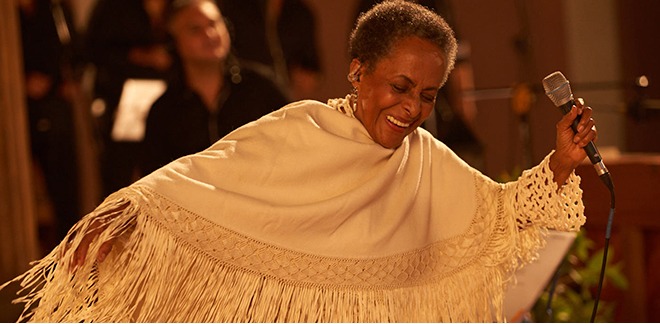
Peruvian gold: Susana Baca is the winner of the Latin Grammy 2020

"El Cóndor Pasa" is recognized by the BBC as “an unforgettable song”

Under the spotlight: Billboard highlights the talent of Peruvian artists
The most recent

Peru's tourism shines brightly at a well-known event in Chile
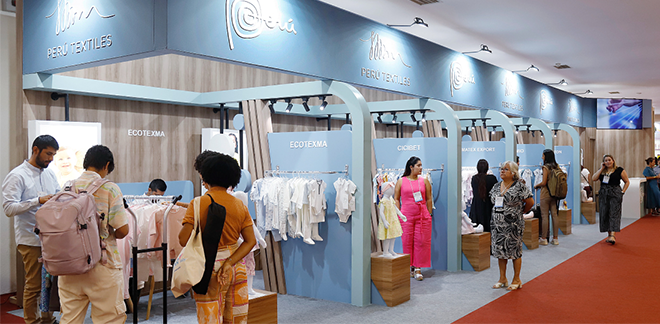
Peruvian children's fashion companies are presented at a fair in Brazil

Karol G, Nick Jonas, and more international artists fell in love with Peru

Garland Magazine
The stories behind what we make, the afro-peruvian cajón: reclaiming a humble percussion crate as one’s own.
Aromica Bhattacharya
1 December 2020
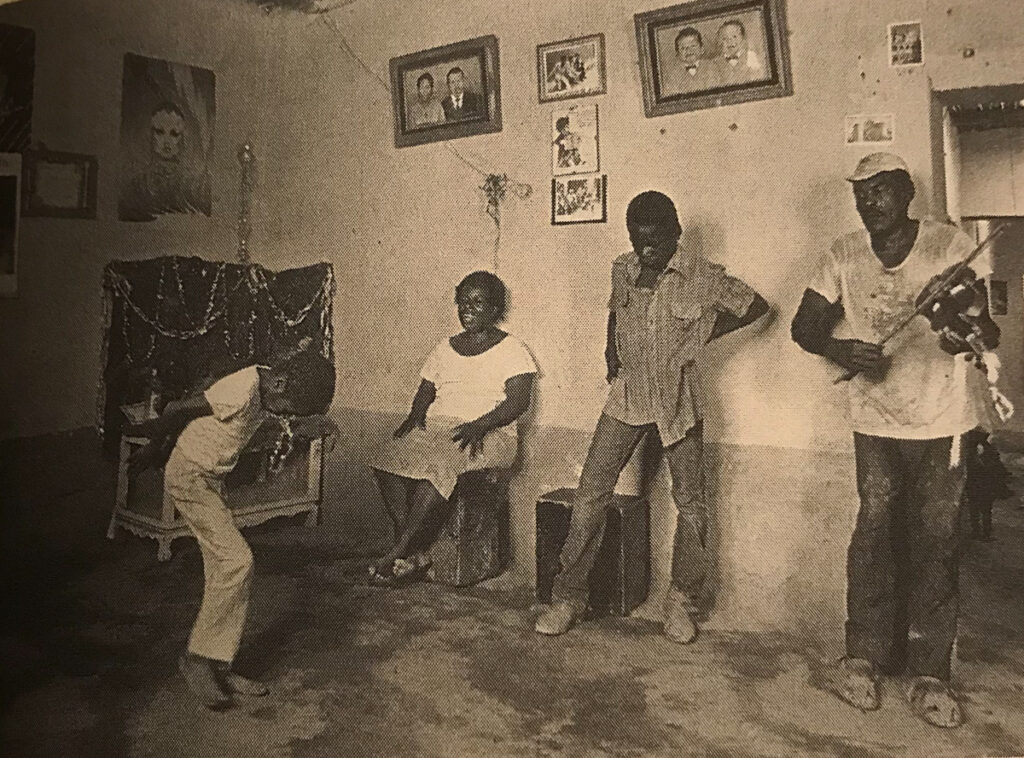
Modest dwellings of the cajon
Aromica Bhattacharya tracks a percussion crate from its invention by African slaves to its eventual acknowledgment as intrinsic to Peruvian cultural heritage.
(A message to the reader in Spanish.)
(A message to the reader in English.)
In 1966, Victoria Santa Cruz, a Peruvian national of African descent, visited Africa for the first time in her life and returned to Peru, proclaiming herself to be “blacker and more Peruvian” than ever. “In Paris, they thought I was African,” she remembers. “They didn’t know that there were Blacks in Peru… In contrast, in Africa they spoke English to me. Because of my clothing and manner of walking they thought I was North American” (Feldman, 2008, p.69). Once back in Peru, she, along with her brother, Nicomedes Santa Cruz, became leading figures in the revival of the Afro-Peruvian dance and music, central to which was the revival of the percussion instrument cajón.
The story of cajón is that of recuperation and revival. Within the tale of the cajón lies the portrait of its Afro-Peruvian maker. Living under the shroud of a systematic invisibility, the cajón lends to its maker the strength to take charge of their own history, albeit steeped in the shackles of colonialism, slavery and race. This tale crosses borders, building bridges seldom witnessed.
History of the slave in Peru
Africans did not travel to Peru driven by their desires. They were taken. They knew little of crossing the Atlantic Ocean. Riding the waves in scores of ships, they came, nameless and faceless, slaves to their Spanish colonisers. Their first mention in record books dates back to 1527 (Del Busto Duthurburu, 2014). As they first stepped ashore, they would have been reminded of the fact that they brought very little along.
As slaves in a foreign land, music wasn’t easy to find. Music fulfilled a functional role in the life of an African slave in Peru. It was the light that guided them and the clock that controlled their hour. Music made the time pass by faster, singing as they sowed rice fields (De cajón Caitro Soto, 1995, p.42).
At first, their desire to play the drums was frowned upon (Rocca Torres, 2010, p.69), and finally it was prohibited altogether (Santa Cruz, 2006, p.15). Their quest for music led them to find rhythm in every object they held. …pots, ladles, pans, machetes, pumpkins, bells, seeds, human and animal bones, canes, bottles, animal skin and innards … and many other articles became “instruments for making music” … (my translation, ibid. p.24).
By day and by night, the empty wooden crates would have been their only true companion. By day it served to carry weight and by night, engulfed in the four walls of their modest dwellings, the empty crates lining the walls were a constant reminder of their nameless existence. Nevertheless, they learned to adapt, slowly learning to call the crate a “cajón”, as was its name in the language of their coloniser.
A camaraderie was born, which quickly turned into nightly congregations of fun and frolic. Relationships began to be forged in these nightly sessions of “jaranas”, peppered with music and dance. At first, the “cajons” were silent in their companionship, witness to this transformation. Soon they came to partake, lending themselves to anything and everything, be it as a piece of furniture or an instrument of music. In this moment, the “cajón” was born, a versatile percussion instrument cherished around the world today, and it was in that very instant that its maker, the Afro-Peruvian, came to life.
Don´t get me wrong. It didn’t happen overnight. The cajón was born out of a long process of evolution, which continued long after the colonisers left the country. Many such “instruments” were born and lost in those years of post-colonial apathy. History recorded as many as twenty-one musical instruments (Mayorga Balcazar, 2013, p.298) fashioned and once played by the Afro-Peruvian community, ultimately lost to oblivion, as victims of the debilitating invisibility which shrouded them and their makers both. The secret of the cajón lay in its numbers. It survived because it came in many shapes and sizes. It wasn’t singular in class, instead dependable and durable in its numerosity. Its survival as a musical instrument lay in the very fact that it was functional, and all the while easily replaceable.
Shame and international recognition
Post-colonial Peru treated the Afro-Peruvian with disdain. General consensus agreed that racially they did not belong to the nation. Even numbers couldn’t come to their rescue. National census from the eighteenth century revealed that 60% of the population of Lima were of African descent. By the following century, the numbers had reduced to 4.8% (De cajón Caitro Soto, 1995, p.15). So where did they go? The truth is nowhere: they became invisible. Afro-Peruvians weren’t a minority by way of their numbers, instead, they were marginalised in power and social prestige. The makers of cajón were subalterns in their own country, victims of the shame they internalised for occupying a position of minority. Ultimately, it was their creation, the cajón, that jolted them out of their stupor.
Spain in the history of the cajón
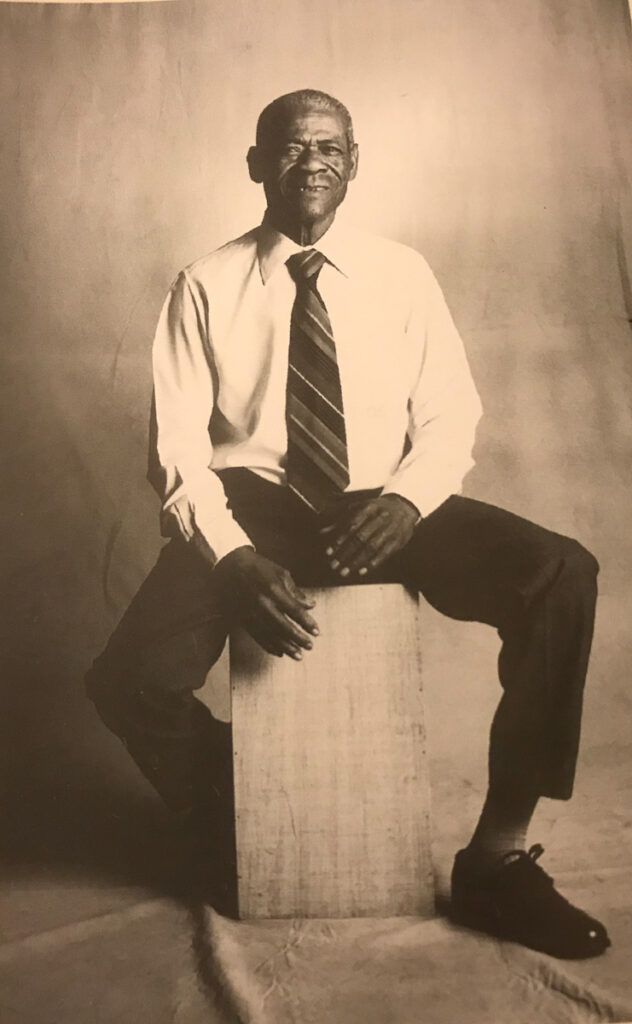
Caitro Soto on a cajon
“Eventually, these voices sought to write their own histories when they realized that dominant cultural narratives refused them representation, or worse, misrepresented them.” (Pramod)
As irony would have it, Spain was pivotal in the revival of the cajón. Neglected in its own home all the while, the cajón gained acclaim internationally. In the 1950s, the cajón gained popularity in the Vals in Spain (Santa Cruz, 2006, p.145), and in the following years, world-renowned Spanish guitarist, Paco de Lucia, introduced it to the Flamenco style of music, having received a cajón as a gift from his friend, the famous Afro-Peruvian musician and cajón player, Caitro Soto. The coupling was so spectacular that many Spaniards began to believe that the cajón had been with them all their life (ibid., p.147). Yet, when Rafael Santa Cruz´s father, a bullfighter by profession, set foot in Spain in 1951 and travelled through cities, small and big, he never once heard the mention of a cajón, let alone in association with flamenco music. In the fifteen years he spent in Spain, the cajón was never once mentioned (ibid., p.41). “I was told many times during my research in Lima that all modern Afro-Peruvian music was invented in the 1960s, based on Cuban and Brazilian models, and therefore had nothing to do with ‘authentic’ black culture in Peru” (Feldman, 2008, p.10). International claims of patrimony of the instrument quickly followed. The cajón was on the verge of being appropriated by international players.
Recuperation and full-fledged revival of the cajón

Revival of the cajon in the Plaza de Armas in Lima, Peru
An international battle ensued, of which cajón was the protagonist. “. . . Black artists and musicians took up the torch, and a fully-fledged revival of Afro-Peruvian music took place in the 1960s”. The Afro-Peruvian makers reclaimed the cajón as their own.
On the second day of August in the year 2001, history came a full circle. The cajón was recognised as the Cultural Heritage of the Nation ( Patrimonio Cultural de la Nación ) by Peru. In recognising the cajón as national heritage, for the very first time in history, its makers too were able to forge for themselves a national identity. Later in 2014, the cajón was bestowed with the title of Instrument of Peru for the Americas ( Instrumento del Perú para las Américas ) by the Organization of American States (OEA). History pivoted very many years ago and culminated in this moment in time when the identity of the cajón and its maker were established in all of the Americas. Yet, there is a question which remains to be asked. Are the revival and recuperation truly complete without the inclusion of the prefix “afro” in the identity of the cajón?
Adapting to an inherently disadvantageous socio-political position, the ingenious invention of the cajón was a creative culmination of the restrictions imposed upon its maker. The atypical conditions of which the cajón is a product, were the catalysts without which the necessity of the creation of a substitute would never have been felt. The cajón wouldn’t have been invented if it weren’t for the African slaves living under the precise conditions in which they found themselves. This invention embraced the inventor´s past and present alike. The story of the cajón is the story of its maker, the Afro-Peruvian community and race, who trace their collective history, culture and identity back to this humble instrument.
De cajón Caitro Soto: El duende en la música afroperuana . Servicios Especiales de Edición S.A., 1995.
Del Busto Duthurburu, José Antonio. Breve historia de los negros del Perú . Fondo editorial del Congreso del Perú, 2014.
Feldman, Heidi Carolyn. Black Rhythms of Peru: Reviving African Musical Heritage in the Black Pacific , Wesleyan University Press, 2008.
Mayorga Balcazar, Lilia, y Margarita Ramírez Mazzetti, editoras. Presencia y persistencia: Paradigmas culturales de los Afrodescendientes . Centro de Desarrollo Étnico-CEDET, 2013
Nayar, Pramod K. Postcolonial Literature: An Introduction . Pearson India. Kindle, Locations 1593-1596.
Rocca Torres, Luis. Herencia de esclavos en el norte del Perú: (Cantares, danzas y música). Centro de Desarrollo Étnico-CEDET, 2010.
Santa Cruz, Rafael. El cajón Afroperuano . SantaCruz E.I.R.L. Ediciones, 2006

Like the article? Make it a conversation by leaving a comment below. If you believe in supporting a platform for culture-makers, consider becoming a subscriber .

Related stories
Click image to view gallery
Leave a Reply Cancel reply
Your email address will not be published. Required fields are marked *
Africa | instrument | Peru | revival

Your shopping cart is empty!
- MUSICAL INSTRUMENTS
- TAMBOURINES & DRUMS
- KIDS PERCUSSION
- BOOKS FOR BEGINNERS
- SHEET MUSIC
- READ BY PICTURE
- TEACHING THROUGH PLAY
- FINGERING CHARTS
- INTEMENOS BLOG
- TYPES OF MUSICAL INSTRUMENTS
- NATIONAL MUSIC
- UNUSUAL INSTRUMENTS
- COOL MUSIC FACTS
The Cajón: From Afro-Peruvian Roots to Global Percussion Phenomenon

The Cajón, derived from the Spanish word for "box," is a box-shaped percussion instrument that originated in Peru. It is played by slapping the front or rear faces, typically made of thin plywood, with the hands, fingers, or various implements such as brushes, mallets, or sticks. The Cajón has its roots in Afro-Peruvian music, specifically música criolla, but has also found its way into flamenco and other Latin American musical styles, such as the Cuban cajón de rumba and the Mexican cajón de tapeo.
The Cajón has a rich history that can be traced back to the late 19th century when it became the most widely used Afro-Peruvian musical instrument. It is believed to have been developed during the period of slavery in coastal Peru, with slaves of West and Central African origin considered to be the source of the Cajón drum. Over time, the instrument gained popularity and by the end of the 19th century, Cajón players were experimenting with its design by bending planks in the Cajón's body to alter its patterns of sound vibration. After slavery, the Cajón spread to a larger audience, including Criollos.
There are two complementary origin theories for the Cajón. One theory suggests that the instrument is a direct descendant of box-like musical instruments from West and Central Africa , especially Angola and the Antilles, which were adapted by slaves from the Spanish shipping crates available to them. In port cities like Matanzas, Cuba, codfish shipping crates and small dresser drawers were turned into similar instruments. Another theory suggests that slaves used boxes as musical instruments to subvert Spanish colonial bans on music in predominantly African areas, essentially disguising their instruments.
The Cajón has evolved over time and has become a versatile instrument that is now used in various musical genres and regions around the world. In the 20th century, the Cajón was not commonly used in the festejo, a traditional Afro-Peruvian music genre, due to the influence of Perú Negro, a musical ensemble founded in 1969. However, the Cajón began to gain prominence in Peruvian music and became a symbol of Peruvian blackness, surpassing the guitar in importance.
The Cajón's global popularity was further enhanced when Spanish flamenco guitar player Paco de Lucía encountered the instrument during a visit to Peru in 1977. Impressed by the rhythmic possibilities of the Cajón, Paco de Lucía brought it to Spain and started using it in his own music. It was later introduced to Spanish flamenco by percussionist Pepe Ébano, and it was used in Paco de Lucía's iconic piece "Entre dos aguas."
Today, the Cajón can be heard extensively in various musical styles, including Coastal Peruvian genres such as Tondero, Zamacueca, and Peruvian Waltz, as well as Spanish modern Flamenco and certain styles of modern Cuban Rumba. It has also found its place in other genres such as blues, pop, rock, funk, world music, jazz, and folk music, including the folk music of Ireland where it is sometimes used in place of the traditional bodhrán frame drum.
The Cajón is typically played by sitting astride the box and tilting it at an angle while striking the head between the knees. The percussionist can also play the sides with the top of their palms and fingers for additional sounds. Some percussion with their hands while using a bass drum pedal simultaneously. However, this technique allows for unique and creative rhythmic possibilities.
In addition to its use in Afro-Peruvian music, flamenco, and other Latin American musical styles, the cajón has also gained popularity in other genres of music. It is now widely used in blues, pop, rock, funk, world music, jazz, and folk music from various regions around the world. The cajón's versatility and ability to produce a wide range of sounds make it a valuable addition to many musical ensembles.
The playing technique for the cajón involves the player sitting astride the box, tilting it at an angle while striking the front or rear faces with their hands, fingers, or other implements such as brushes, mallets, or sticks. The player can also play the sides of the cajón with the top of their palms and fingers to produce additional sounds. Some percussionists even attach a bass drum pedal to the cajón, allowing them to play it with a single foot while leaving their hands and other foot free to play other instruments.
There are also innovative techniques developed for playing the cajón, such as the Pen Technique by Patrizio Migliarini, which involves using plastic or metal brushes, similar to those used for drum kits, to play jazz and funky rhythms with a completeness and dynamic richness close to that of a drum set. Another technique involves using an ordinary bass drum pedal, effectively turning the cajón into an indirect percussion instrument that can be played with the feet. This technique, while limiting the player's standard cajón-playing position, allows for unique and creative possibilities.
In recognition of its cultural significance, the cajón was declared National Heritage by the Peruvian National Institute of Culture in 2001, and in 2014, the Organization of American States declared it an "Instrument of Peru for the Americas." The cajón's rich history, cultural significance, and versatile musical applications have made it a beloved and widely used percussion instrument in music styles around the world.
While the cajón is too big to be played at home comfortably, smaller percussion instruments, such as tongue drum, provide this opportunity.
No previous training or skills are necessary to enjoy these fascinating instruments. It is impossible to play them incorrectly. Anyone can play them: those who want to develop a good sense of rhythm and an ear for music, those who are seeking relaxation after a hard day at work, those who have always had an interest in learning how to play a musical instrument, and those who want to introduce something unusual into their lives and explore their inner selves. This book is aimed at those who want to add popular melodies to their experimentation. We use numbers above the classic notes because most modern tongue drums have numbers engraved or painted on their keys. This is great for the absolute beginner who cannot read sheet music.

Next article
- Related Products
+51 993 467 835

Cajon | Peruvian Music and Instruments
Cajon – Peruvian Music and Instruments
This percussion instrument, of Afro-Peruvian origins, is used in most coastal variations of the marinera, as well as música criolla (Creole) and música negra (Afro-Peruvian) genres in general. The instrument is crafted from a wooden box which features a soundhole at the back. The musician sits on top and slaps on the front surface with the palms of his hands. Although of simple appearance, the instrument has built up a following outside Peru, including its recent incorporation into flamenco.
**Prices may vary depending on travel dates. For more information, fill in the form to get in contact with a Travel Advisor.
PERUVIAN DANCES
- Vals Criollo
- Scissors Dance
- Chicha or Peruvian Cumbia
PERUVIAN INSTRUMENTS
- Mates Burilados
PERUVIAN GASTRONOMY
- Local Cuisine
- Ingredients
Contact Us:
Tour related:.

Join us for an Ayahuasca ceremony in Iquitos

Mystical Experience in Southern Peru
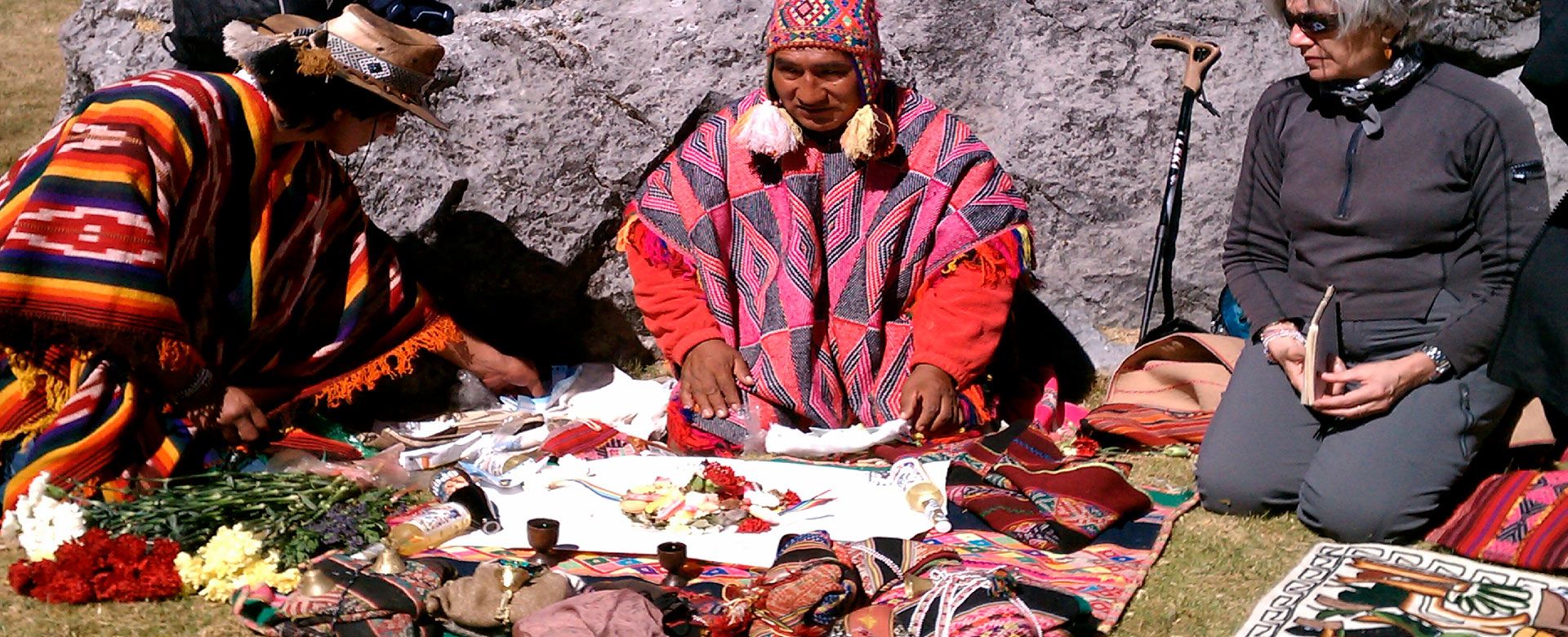
Experiencia Mística al Sur del Perú

Discover and enjoy Huaraz and Huayhuash trek

Discover the northern treasures of Peru

Acclaimed Cusco, Sacred valley and Tambopata tour

Luxury Amazon river cruise

Amazing Inca Trail to Machu Picchu

Lima, Cusco and Machu Picchu Deluxe

Cusco, Machu Picchu & Manu National Park

Lima, Cusco and Machu Picchu Citadel

Discover the Peru Highlights

Wonderful Arequipa and enigmatic Puno

Prices from USD based on double occupancy.

Contact Info:
Av. Camino Real N° 111 Office 205 Second Floor San Isidro, Lima - Perú
Av. Primavera 543 4to.piso Chacarilla del Estanque - San Borja
Copyright © 2023 by Perutravels.net
Kickstart My Adventure
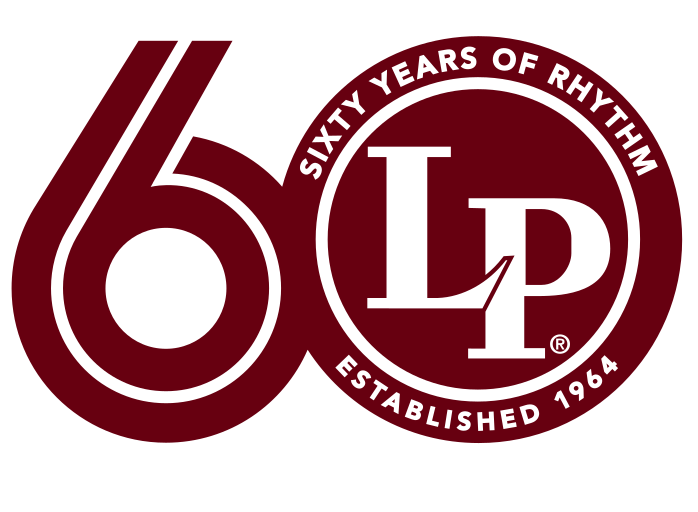
- Snare Drums
- Cajon Accessories
- Cowbells and Agogo Bells
- Tambourines
- Sound Effects
- Ethnic Drums
- Frame Drums
- Miniature Collection
- Mounts and Brackets
- Accessories
- Artist Roster
- Artist Legends
- LP® Gold Circle Dealers
- U.S. Dealers
- International
- Online Dealers
- Rhythmology
- Warranty Information
- LP Cowbell Book
- LP Spare Parts
- LP Product Manuals
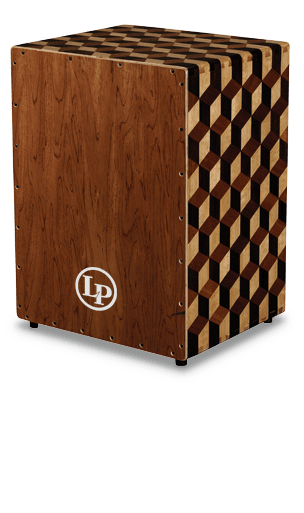
CAJON ACCESSORIES
There is no doubt as to the cajon's enormous rise in popularity in recent years. What's not to love about the cajon? It's convenience and ability to perform in nearly any acoustic-based situation have made this "drum set in a box" a go-to for both drummers and percussionists world-wide. LP is proud to offer the most comprehensive line of cajons on the market today. Led by our USA made Americana Series and backed up with a full assortment at all price levels, LP offers the perfect cajon for every player and every gig.

- 3450 Lunar Ct. Oxnard, CA 93030
- [email protected]
- 805-919-2499
© Copyright 2022 Latin Percussion. All rights reserved.

- 0 Shopping Cart $ 0.00 -->

Cajon – Origins in Peru & why we want to learn!
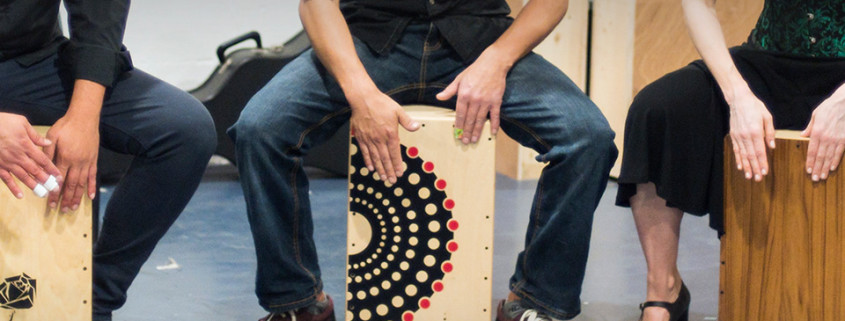
By Kasandra “La China”
July 25, 2007
Origins & Evolution
According to Wikipedia’s definition, the cajón is the most widely used Afro-Peruvian musical instrument in the 20th century. The instrument has been officially declared “Cultural Patrimony of the Nation” by the Peruvian government. It was developed in the 1800s, most likely in coastal Peru by slaves of West and Central African origin.
Knowing that the cajón comes from slave musicians in the Spanish colonial Americas, there are two complementary origin theories for the instrument. It is possible that the drum is a direct descendant of a number of boxlike musical instruments from west and central Africa, especially Angola, and the Antilles. These instruments were adapted by Peruvian slaves for the Spanish shipping crates at their disposal. In port cities like Matanzas, Cuba they used cod-fish shipping crates. Elsewhere, small dresser drawers became instruments.
Another theory posits that slaves simply used boxes as musical instruments to combat contemporary Spanish colonial bans on music in predominantly African areas. In this way, cajóns could easily be disguised as seats or stools, thus avoiding identification as musical instruments. In all likelihood it is a combination of these factors – African origins and Spanish suppression of slave music – that led to the cajón’s creation.
The cajón was introduced into flamenco in only the 1970s by guitarist Paco de Lucia. While in Peru, he was given the cajón by percussionist Caitro Soto. In the Paco de Lucia sextet, the cajon is played by Brazilian percussionist Rubem Dantas.
Why we want to learn!
In my years of traveling to Spain, I have seen hundreds of Flamenco shows and it is very rare these days to see a theatrical show without a cajón present on stage. Today it is interwoven with Flamenco sounds, chords, rhythm, soniquete, grooves and is an important part of modern Flamenco music. Purists still maintain that Flamenco should remain a cuadro (singer, guitarist, palmero, dancer), but the reality today is that the cajón adds a rich dimension to Flamenco music and is very slick in accompanying the guitar and baile.
Personally, I love it and I hope to see the Vancouver community embrace it, study it, practice it, grow and eventually perform it at a high level. The cajón is relatively new here and we have only had Alejandro El Chapin and Timo Lozano give workshops. But join us this summer, for my intro “Planta-Tacon-Tacon” version of Bulerias & Tangos on July 25 & 26th cajon workshop. Then join us again for Seattle’s David Carmona for his cajon crash course on August 11 & 12th at 11am for an inspiring guest artist workshop!
My favorite cajon performance ever was by Manolo Soler, a great dancer himself, who accompanied the rhythmic genius, Javier Baron, at the Festival de Jerez…where they were throwing once bitten green apples around on stage…don’t ask me what the significance of the apples were, but who cares, they rocked. I believe that a great cajon accompanist for baile, must also be a dancer him/herself.
Why learn? In a nutshell…
1. Because it’s cool to sit on a box with your hair down.
2. So we can make as much noise with our hands as our feet.
3. It’s another way to internalize Flamenco Compas, especially the contras (aka offbeats).
*Note: In La Sirena’s (our children’s instructor) latest travels to Albuquerque, her cante teacher told her specifically to play the cajon because it will help with the soniquete of her singing. I really get that because when playing the cajon major accents happen on the TAK which is the high pitched contra in most case.
4. It’s another way to participate in Flamenco. You don’t have to dance. A lot of husbands (aka Flamenco Widows) don’t want to dance. For the life of me, I do not understand why not!? But if you think Flamenco is too gay for your machismo, then learn how to do palmas and learn the cajon and accompany your wife…
Leave a Reply
Leave a reply cancel reply.
Your email address will not be published. Required fields are marked *
604-671-9182 | [email protected] | The Dance Centre, 677 Davie Street, Vancouver, BC Copyright © 2015-2024 Al Mozaico Flamenco Dance Academy | All Rights Reserved | Branding by Gogo Telugo | Website by Elvira Yebes


Viajes del Perú - Travel Blog sobre el Perú
Viajes del Perú - Guía de viajes de Perú con toda la información para organizar tu viaje. Blog de viajes Perú. Consejos, rutas, foros y muchas experiencias de viajeros.
La noche que Paco de Lucía conoció el cajón peruano

2 comentarios:

Muy interesante esta historia. Es un orgullo, para nosotros los peruanos, el haber aportado en la evolución de la música española y, además, que haya sido el famoso Paco de Lucía quien incorporó el cajón en dicha música.

Y es muy curiosos que en España casi nadie conozca esta historia. La mayoría (sobre todo las nuevas generaciones) piensa que el cajón es un instrumento gitano que entró hace décadas en el flamenco. A Paco de Lucía le honra que siempre aclarara en vida que el cajón es un instrumento oriundo de Perú. Solo queda brindar por la música que se creó de este hermoso encuentro de dos culturas.
- PRO Courses Guides New Tech Help Pro Expert Videos About wikiHow Pro Upgrade Sign In
- EDIT Edit this Article
- EXPLORE Tech Help Pro About Us Random Article Quizzes Request a New Article Community Dashboard This Or That Game Popular Categories Arts and Entertainment Artwork Books Movies Computers and Electronics Computers Phone Skills Technology Hacks Health Men's Health Mental Health Women's Health Relationships Dating Love Relationship Issues Hobbies and Crafts Crafts Drawing Games Education & Communication Communication Skills Personal Development Studying Personal Care and Style Fashion Hair Care Personal Hygiene Youth Personal Care School Stuff Dating All Categories Arts and Entertainment Finance and Business Home and Garden Relationship Quizzes Cars & Other Vehicles Food and Entertaining Personal Care and Style Sports and Fitness Computers and Electronics Health Pets and Animals Travel Education & Communication Hobbies and Crafts Philosophy and Religion Work World Family Life Holidays and Traditions Relationships Youth
- Browse Articles
- Learn Something New
- Quizzes Hot
- This Or That Game
- Train Your Brain
- Explore More
- Support wikiHow
- About wikiHow
- Log in / Sign up
- Arts and Entertainment
- Musical Instruments
- Making Musical Instruments
How to Build a Cajon
Last Updated: August 10, 2021 Approved
wikiHow is a “wiki,” similar to Wikipedia, which means that many of our articles are co-written by multiple authors. To create this article, 18 people, some anonymous, worked to edit and improve it over time. wikiHow marks an article as reader-approved once it receives enough positive feedback. In this case, 89% of readers who voted found the article helpful, earning it our reader-approved status. This article has been viewed 652,481 times. Learn more...
A cajon is a six-sided Peruvian drum that's a popular DIY instrument project. It's a versatile and exciting instrument that can be played with your hands and feet simultaneously, producing a wide variety of tones and rhythms. You can take on this carpentry project with the right materials and a good plan. See Step 1 for more information.
Getting Started
- Use 1/8 inch plywood for the tapa. The tapa is the striking surface of the instrument, and you'll generally use a piece sized 13 inch by 19 inch for most cajons.
- For the other sides of the instrument, use 1/2 inch plywood.
- The top and bottom pieces should be 13 inch by 13 inch
- The single rear piece should be 13 inch by 18 inch
- The sides should be 12 1/2 inch by 18 inch
- Round and sand the edges to create an even and clean edge.
- A snare is basically a string or wire stretched to tension and outfitted with something that rattles. If you wanted to make your own, using old guitar strings, fishing line, or other wire would be perfectly appropriate for a homemade cajon. For rattles, try paperclips, sinkers, or other tiny metal salvaged materials that make a good rattling sound.
Gluing the Frame
- Have a helper steady the pieces as you add the glue and keep them as straight as possible, or cut guide pieces to keep inside the box and ensure straight angles.
- Wipe off any excess glue with a wet cloth and read the instructions for the particular variety of wood glue you purchase for advice about pressure and drying time.
- Stretch the snares diagonally from the top corners of the side that will be the tapa, roughly 3 inches from each corner on the top and on the side. Screw them in with wood screws, or attach them to tuning pegs for more control over the sound.
Finishing the Cajon
Community q&a.
- Protect your eyes and ears when working with power tools. Wear safety glasses and earplugs or earmuffs. [3] X Research source Thanks Helpful 0 Not Helpful 0
Things You'll Need
- 12mm (or 1/2 inch) plywood
- 3mm (or 1/8 inch) plywood
- Clamps and/or luggage straps
- 3x20mm or 3.5x20mm screws
- Power drill
- Sanding paper
You Might Also Like

- ↑ http://caseyconnor.org/jl/cajon?showall=&limitstart=
- ↑ https://courses.physics.illinois.edu/phys406/sp2017/Student_Projects/Spring12/Alex_Slifer_P406_Project_Report_Sp12.pdf
- ↑ https://www.esfi.org/resource/do-it-yourself-diy-electrical-safety-216
About This Article
To build a cajon, you'll need 1/8 inch plywood for the striking surface of the instrument and 1/2 inch plywood for the sides. Then, cut out a top and bottom piece that are both 13 inches by 13 inches, a rear piece that's 13 inches by 18 inches, and 2 sides that are each 12 1/2 inches by 18 inches. Also, on the rear piece, cut out a 12-centimeter hole. Next, assemble the frame using wood glue and attach snares to the side that will be the striking surface. Finally, screw some wooden feet into the bottom of your cajon and smooth out the top edges so it's comfortable to sit on. To learn how to make your own snares for your cajon, scroll down! Did this summary help you? Yes No
- Send fan mail to authors
Reader Success Stories
Rob Paynter
Jun 29, 2017
Did this article help you?

Johnny Rodriguez
Apr 19, 2017
Sonar Vivek
Mar 27, 2017
William Rees
Apr 17, 2017
B. Gireesam
Sep 28, 2016

Featured Articles

Trending Articles

Watch Articles

- Terms of Use
- Privacy Policy
- Do Not Sell or Share My Info
- Not Selling Info
Get all the best how-tos!
Sign up for wikiHow's weekly email newsletter

We´re proud to be the leading developer of percussion instruments. We work hard to stimulate the market and broaden musical horizons with our ultimate selection.
Popular Instruments
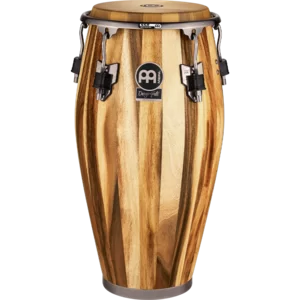
Signature Artists
Meinl Percussion
Hide Filter Show Filter |
Cajon series, cajon height (inch), cajon accessory type, cajon bag type, cajon bag width (inch).
- highlights in 2020
- atmo-instruments
- new for 2024
- Alpine Series Djembes
- Backing Tracks
- Artist Series Sand Hihat Tambourine
- The Meinl Groove Bell
- Meinl Percussion - Candela Percussion Cymbals
- Studio Session Insights
- independence-workout-series
- new-products-2022
- drum-circle
- the-art-of-facilitation
- Csabi Pusztai
- New for 2024
- Catalog Archive
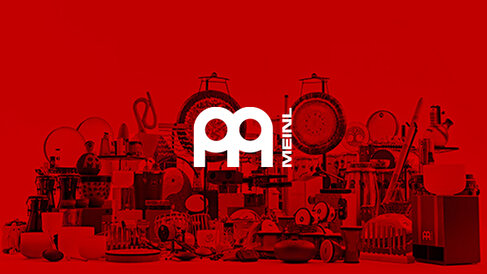
7 Best Cajons That Money Can Buy (All Budgets)
- September 18, 2023
- Find the best cajon drums
- All budget levels covered
- Frequently asked questions are answered at the bottom!
Cajons are portable, versatile, and, best of all, cheap! They’re also a really easy way to get into drumming. You want to spend your time playing through, right, not spending endless hours trawling through reviews.
To help you out, today we’re listing the best cajons on the market.
We’re covering options at all price points and will evaluate the options according to value for money, features, sound, and versatility.
What are the Best Cajons?
Our pick for the best overall cajon is the Latin Percussion LP1426 Adjustable Snare Cajon , which has a versatile range of sounds and a comfortable design, all for around $260 (USD).
The best budget cajon drum is the Meinl Percussion Compact Jam Cajon , which has a compact design, a range of aesthetic choices and can be picked up for around $80! (USD)
The best cajon on the premium end of the market is the Schlagwerk Super Agile Cajon , which is super responsive and allows for a full range of dynamic expression for around $400 (USD).
Our choices for the 7 best cajons are:
- Latin Percussion LP1426 Adjustable Snare Cajon (Our Pick)
- Meinl Percussion Compact Jam Cajon (Best Budget)
- Schlagwerk Super Agile Cajon (Best Premium)
- Meinl Percussion Snarecraft Pickup Cajon
- Luna Tattoo Cajon
- Meinl Percussion Jumbo Bass Subwoofer Cajon
- Pearl Primero Cajon
Let’s dive into the reviews.
1. Latin Percussion LP1426 Adjustable Snare Cajon (Our Pick)

Latin Percussion's versatile Adjustable Snare Cajon gives you the solid feel and tonal control you need for a broad range of musical styles. Its wooden shell features a snare-backed birch frontplate that provides you with an extremely expressive and dynamic playing surface.
The Latin Percussion (LP) LP1426 Adjustable Snare Cajon is one of the best cajon drums on the market and is available for around $260. It features adjustable snare wires and a comfortable, textured seating surface.
- Versatile sound options
- Textured seating surface
The Latin Percussion LP1426 has a medium-density fiberboard body and birch faceplate and is built to last. Its robust design is adequate for gigging and busking, making it a great choice for those who play outside of the home or studio.
LP have provided a bass port and a tension wheel , which can be used to adjust the snare wires or even disengage them.
The Adjustable Snare Cajon won’t go anywhere while you’re playing it, as it has rubber feet and a textured seating surface that is non-slip.
It’s a standard-size model with the following dimensions: 19.75″ (height, 11.75″ (width), 12.25″ (depth).
If you like the look of this model but don’t want to spend so much, check out the LP Black Box Natural Wire Cajon. This cheaper model has a similar appearance and a medium-density fiberboard body, but it only has fixed snare wires and can be picked up for around $100.
- Adjustable snare wires
- Rubber feet
- Comfortable and stable
- Built tough
- Perhaps a bit pricey for a medium-density fiberboard build
2. Meinl Percussion Jam Cajon (Best Budget)

The Meinl Percussion Compact Jam Cajon is perfect for playing on the go. Its compact design is lightweight and easy to carry to drum circles, unplugged gigs, or anywhere else you enjoy playing.
Meinl Percussion really hit it out of the park with Compact Jam Cajon . This travel-size model is one of the best compact cajons on the market right now, and can be picked up for around $80.
- Two sets of internal snare wires
- Compact size
Meinl Percussion Jam Cajon is 10.5″ x 15″ x 10.25″ and weighs 8 lbs, which makes it super portable and easy to move around. For reference, regular cajons are usually 18” – 20” tall.
This model has two sets of internal snare wires to add some sizzle to your beats . That’s it in terms of features – this is no-frills budget model.
The Jam body is made of Baltic birch , and there are a few options in terms of faceplate woods, including Baltic birch, almond birch, heart ash, and burl. These options offer some variety in aesthetics as well as wood types.
Note that some of these different versions can up the price tag, though.
- Dual snare wires
- Different faceplate options
- Great value
- Very light on features
3. Schlagwerk Super Agile Cajon (Best Premium)

Cajon makers often struggle to create instruments that are both subtle enough for light playing dynamics yet controlled enough that each snare hit rings out cleanly. One of the things drummers appreciate most about this Cajon Super Agile is how clearly Schlagwerk Percussion managed to balance these elements.
The Schlagwerk Super Agile Cajon is one of the best-sounding cajons for those who value dynamic playing and want an instrument that can capture the full subtleties of a performance.
- Eight-ply birch design
- No sound port
The Super Agile Cajon costs around $400, but Schlagwerk has put a lot of work into the design to ensure it can capture light playing dynamics while retaining clarity for each note.
The Schlagwerk string and snare technologies also present a clear, harmonically complex bass sound.
There’s no sound port here, so the sound is a bit more balanced, and any extra oomph has to come from your playing.
Schlagwerk Super Agile Cajon has an eight-ply birch design and a stylish, understated veneer faceplate.
The snare element is removable, so there’s some added versatility in the setup for this model.
There’s a non-slip surface on the top, an add-on seat pad, and felt feet to protect the wood body.
- Sensitive and balanced response
- Great for dynamic playing
- Beautiful looks
- Big cost outlay
4. Meinl Percussion Snarecraft Pickup Cajon

Here's the cajon you've been looking for when you want to jam with a group and really be heard. The Meinl Snarecraft Professional Series Pickup Cajon comes with three piezo pickups - two for snare sounds and one for bass sounds
The Meinl Percussion Snarecraft Pickup Cajon is one for working musicians, as you get three piezo pickups for amplifying the cajon, and it’s well priced at under $180.
- Three piezo pickups
- Snare and bass sounds are individually amplified
- Rear-facing sound port
The Meinl Percussion Snarecraft Pickup Cajon is one of the best value cajons for those who want to amplify their instrument for performances.
There are three piezo pickups – two for the snare sounds and one for the bass, so the full range of your playing is captured.
Meinl provides a 1/4” output for sending to the PA and a 1/4” line jack, as well as two pots that control volume and tone.
That’s not all, though, as there are also dual steel fixed snare wires and a rear-facing sound port. There are also rubber feet included, which will help protect your investment.
All in all, you get a lot of features in a very reasonably priced product here.
The Meinl Snarecraft Pickup Cajon is made of Baltic birch and is available in natural and dark-stained versions.
You get a full-size cajon here with the following dimensions: 11.75″ x 19.75″ x 11.75″.
- Three pickups
- Volume and EQ controls
- Rear sound port
- Fixed snare wires
5. Luna Tattoo Cajon

Musicians have always appreciated Luna for their signature blend of high-quality tone and eye-catching aesthetics. So, it comes as no surprise that Luna’s Tattoo Cajon delivers in both looks and sound! The back and sides are constructed of an incredibly sturdy combination of both eucalyptus and birch, with a deep and resonating ash front.
The Luna Tattoo Cajon is one of the best affordable cajons. For $120, you get a great-looking and, more importantly, a great-sounding instrument with switchable on/off snare wires.
- Switchable snare wires
- Custom graphics
The option to disengage the dual snare wires enables a lot of versatility in terms of the sounds you can get from the Luna Tattoo Cajon.
Luna built the Tattoo Cajon out of eucalyptus and birch with a deep, resonant ash faceplate. There’s also a rear sound port to help project your playing.
There are two versions available – satin black and teal. Both versions have a natural wood grain faceplate with a custom tattoo design.
Included with the Luna Tattoo Cajon are a gig bag and a foam pad for comfort when sitting on the cajon.
This model has a hefty size, with the dimensions coming in at 12″ x 12″ x 19″.
- Snare wires can be disengaged
- Gig bag included
- The tattoo graphic won’t be for everyone
6. Meinl Percussion Jumbo Bass Subwoofer Cajon

With its internal reflex channel and front sound port in place of a traditional rear-facing one, the Meinl Percussion Jumbo Subwoofer Cajon gives you enhanced bass note projection that's awesome for live and unplugged gigs.
The Meinl Percussion Jumbo Bass Subwoofer Cajon has a forward-facing sound port that provides a phat bass sound and can be snapped up for around $220.
- Front sound port
- Big bass projection
The Meinl Percussion Jumbo Bass Subwoofer Cajon’s front sound port is designed to make the bass sound more like a bass drum than a regular cajon , as typically, cajons have a smaller, rear-facing sound port.
The front sound ports also make this model louder and great for harder-hitting music. It could also be a good fit for someone who plays without amplification, as you won’t have to work hard to be heard.
The Jumbo Bass Subwoofer cajon is made of fiberboard with a Walnut faceplate, and is full size with a height of 19.75″. It’s also fitted with fixed snare wires.
- Big bass sound
- Punchy response
- Not the most versatile cajon
- Fixed snare wires only
7. Pearl Primero Cajon

With its built-in bass port and a set of fixed snare wires, the Pearl Primero Cajon delivers a wider range of percussion sounds than many other cajons. The bass sound is deep and rich. And the snares add brightness and articulation, giving your box drum the sparkle it needs to hold its place in the mix.
The Pearl Primero Cajon is a great affordable cajon that combines custom looks and a big, projecting tone that will help you drive your band, all for around $100.
- Dual fixed snare wires
The Pearl Primero Cajon is available in several different custom designs, which are quite eye-catching and aren’t just your usual basic wood grain designs.
Depending on the design, you can sometimes pick up a Pearl Primero Cajon brand new for under $100. Even the standard pricing across the range isn’t much more than $100.
Pearl provides dual fixed snare wires and a rear 4.5” sound port for this model.
This cajon has a lot of projection and oomph, so on smaller gigs, you may not even need to mic it.
The Pearl Primero Cajon body is made of medium-density fiberboard, while there’s a choice between a meranti or cherry faceplate .
This model has standard dimensions of 11.75″ x 11.75″ x 19.25″.
- Big projection
- Looks great
- Very affordable
Is cajon easy to learn?
Learning how to play the cajon is very easy. In fact, it’s one of the simplest instruments to learn . You can learn the basic strokes and rhythms in a single session.
There are two basic strokes – bass, which is played in the center of the faceplate of the cajon, and the snare, which is played on the top of the faceplate. Once you have these down, you can play a wide variety of rhythms and accompany other musicians.
How much should you spend on a cajon?
An entry-level cajon can be picked up for $50 – $100 (USD), and cajons in this price range will do the job if you just want to have some fun and learn the instrument. Such cheap instruments are usually pretty light on features, though.
You’ll likely have to spend more if you desire certain features, such as pickups for amplification, EQ controls, or the ability to alter the engagement of the snare wires.
The above features are usually only found on cajons in the $100 – $300+ price range.
There’s a relatively small number of cajons priced beyond $300 on the market, but those available typically have striking custom appearances, special features, or rarer tone woods.
Now that you’re all caught up on cajons check out the ten most common drum wood types and their characteristics here !

Steve Charlton
Steve is a musician and journalist who hails from Melbourne, Australia. He’s played on stages across Australia and beyond, and written for anyone that’d have him. He’s taught every instrument he can play, and a few he can’t. He also has strong opinions on the appropriate amount of compression to be used on a track and will regale you with them if you dare to bring it up.
Related Posts

Doumbek vs. Darbuka (Breaking Down Tone, Size & Playability)
- August 23, 2023

The Ultimate Guide To ALL Types Of Drums & Percussion
- May 27, 2023

16 Types Of Percussion Instruments (Differences Explained!)
- October 15, 2022
Leave a Reply Cancel Reply
Your email address will not be published. Required fields are marked *
Name *
Email *
Add Comment *
Post Comment

- Musical Instruments
- Drums & Percussion
- Hand Percussion
- Folk & World
No featured offers available
- Quality Price,
- Reliable delivery option, and
- Seller who offers good customer service

Image Unavailable

- To view this video download Flash Player
A Tempo Percussion Cajon, Brown (CJ-CLASS-01)
About this item.
- PREMIUM CONSTRUCTION: The body features select pieces of solid Mohena with a resonant side made from a Lupana plywood and a multi-ply Spanish Cedar playing surface
- HEAVY-DUTY: Built to last overtime with a furniture-grade design that provides superior durability
- CONVENIENT: Includes a free padded gig bag to easily transport your instrument while on the go

Top rated similar items

Product information
What's in the box, product description.
The CJ-CLASS-01 Classic Cajon Drum is perfect for percussionists of all skill levels. This drum produces a Traditional Peruvian sound with deep, defined bass. The body is made from select pieces of solid Mohena - dried to a precise 8 percent moisture level and then joined with sturdy dovetail joints. It features a multi-ply Spanish Cedar playing surface and a resonant side of Lupuna plywood. Fitted with Flamenco-style snare wire, this drum is sure to impress! The bright body finishes in Polyester and Polyurethane with Matte front make it easy to keep your kit looking its best.
Compare with similar items
Looking for specific info, customer reviews.
Customer Reviews, including Product Star Ratings help customers to learn more about the product and decide whether it is the right product for them.
To calculate the overall star rating and percentage breakdown by star, we don’t use a simple average. Instead, our system considers things like how recent a review is and if the reviewer bought the item on Amazon. It also analyzed reviews to verify trustworthiness.
- Sort reviews by Top reviews Most recent Top reviews
Top reviews from the United States
There was a problem filtering reviews right now. please try again later..
- Amazon Newsletter
- About Amazon
- Accessibility
- Sustainability
- Press Center
- Investor Relations
- Amazon Devices
- Amazon Science
- Sell on Amazon
- Sell apps on Amazon
- Supply to Amazon
- Protect & Build Your Brand
- Become an Affiliate
- Become a Delivery Driver
- Start a Package Delivery Business
- Advertise Your Products
- Self-Publish with Us
- Become an Amazon Hub Partner
- › See More Ways to Make Money
- Amazon Visa
- Amazon Store Card
- Amazon Secured Card
- Amazon Business Card
- Shop with Points
- Credit Card Marketplace
- Reload Your Balance
- Amazon Currency Converter
- Your Account
- Your Orders
- Shipping Rates & Policies
- Amazon Prime
- Returns & Replacements
- Manage Your Content and Devices
- Recalls and Product Safety Alerts
- Conditions of Use
- Privacy Notice
- Consumer Health Data Privacy Disclosure
- Your Ads Privacy Choices

IMAGES
VIDEO
COMMENTS
The cajon is a real and vital element in the resistance of Afro-Peruvians," Rafael Santa Cruz told Andina, a Peruvian media outlet. Santa Cruz was one of the most prominent Afro-Peruvian actors and musicians. He died in 2014 at the age of 53. In 2001, the cajón was officially recognized in Peru as a "Cultural Heritage of the Nation.".
His Majesty, the cajón. That is the title that the famous decimista (traditional Peruvian poet) Nicomedes Santa Cruz gave to this musical instrument, whose melody became one of the greatest pleasures of the hundreds of African slaves who arrived in Lima during the time of the conquest.. The rhythm of nostalgia. This instrument, today considered to be National Cultural Heritage, was developed ...
The Afro-Peruvian makers reclaimed the cajón as their own. On the second day of August in the year 2001, history came a full circle. The cajón was recognised as the Cultural Heritage of the Nation ( Patrimonio Cultural de la Nación) by Peru. In recognising the cajón as national heritage, for the very first time in history, its makers too ...
The Cajón, derived from the Spanish word for "box," is a box-shaped percussion instrument that originated in Peru. It is played by slapping the front or rear faces, typically made of thin plywood, with the hands, fingers, or various implements such as brushes, mallets, or sticks. The Cajón has its roots in Afro-Peruvian music, specifically ...
Cajon - Peruvian Music and Instruments. This percussion instrument, of Afro-Peruvian origins, is used in most coastal variations of the marinera, as well as música criolla (Creole) and música negra (Afro-Peruvian) genres in general.
It's convenience and ability to perform in nearly any acoustic-based situation have made this "drum set in a box" a go-to for both drummers and percussionists world-wide. LP is proud to offer the most comprehensive line of cajons on the market today. Led by our USA made Americana Series and backed up with a full assortment at all price levels ...
According to Wikipedia's definition, the cajón is the most widely used Afro-Peruvian musical instrument in the 20th century. The instrument has been officially declared "Cultural Patrimony of the Nation" by the Peruvian government. It was developed in the 1800s, most likely in coastal Peru by slaves of West and Central African origin.
Percussionist Leon Mobley playing a modified cajón; traditional cajones have the hole at the back, opposite the tapa Sounds of a cajón in use. A cajón (Spanish:; "box, crate, drawer") is a box-shaped percussion instrument originally from Peru, played by slapping the front or rear faces (generally thin plywood) with the hands, fingers, or sometimes implements such as brushes, mallets, or sticks.
Cajon Lessons: Marinera a traditional rhythm from Peru: from How To Play The Cajon: For BeginnersHere is video lesson from my How To Play The Cajon: For Begi...
Que la noche del 23 de marzo de 1977 se dieron todas las circunstancias para que el guitarrista flamenco Paco de Lucía conociera el cajón peruano en una visita a Lima con motivo del cierre de una gira que realizaba con su banda a través de Sudamérica. Tanto se ha podido ver el cajón peruano adaptado al flamenco en la infancia de la última ...
Excelente muestra de percusión de 4 maestros del Cajón Peruano. Se trata de un extracto del concierto de Eva Ayllon en California en el año 2005. La introduc...
2. Cut out the required sheets of plywood. Prepare the body of the cajon by cutting the correct measurements to form the basic box. Make sure the cuts are very straight by clamping a metal ruler to the sheet of plywood and using a jigsaw or circular saw. The top and bottom pieces should be 13 inch by 13 inch.
Get Your Free DRUM! Mag Pack https://pro.drummagazine.com/free-drum-mag-pack Drummers! Learn how to play the cajon from one of the instrument's leading pra...
Percusión Real, Villa María Del Trunfo, Lima, Peru. 12,048 likes · 4 talking about this · 106 were here. El Mejor Cajón Peruano ,mas de 33 años fabricando los mejores cajones para el Peru y el mundo....
Cajon Bag Width (Inch) 149 items. Reset. Apply. Show more. back to top. The leading developer of percussion instruments such as Congas, Bongos, Timbales, Cajons, Djembes, Hand Percussions and many more.
The Latin Percussion (LP) LP1426 Adjustable Snare Cajon is one of the best cajon drums on the market and is available for around $260. It features adjustable snare wires and a comfortable, textured seating surface.. Features. Versatile sound options; Bass port; Textured seating surface; Review. The Latin Percussion LP1426 has a medium-density fiberboard body and birch faceplate and is built to ...
The CJ-CLASS-01 Classic Cajon Drum is perfect for percussionists of all skill levels. This drum produces a Traditional Peruvian sound with deep, defined bass. The body is made from select pieces of solid Mohena - dried to a precise 8 percent moisture level and then joined with sturdy dovetail joints. It features a multi-ply Spanish Cedar ...
In addition to our standard services, Grand Russia offers tours packages to Moscow and St Petersburg. You cannot resist our Two Hearts of Russia (7 Days &6 Nights), Golden Moscow (4 Days &3 Nights), Sochi (3 Days & 2 Nights), Golden Ring (1 Day & 2 Days), and many more. As a leading travel agency specializing in the tour to Russia and Former ...
Cajón flamenco / Peruano ViajeroCon botones para correaNO INCLUYE CORREAUna tapa con cuerda en V (sonido flamenco) y otra sin cuerda (sonido peruano)...#cajó...
Requirements for foreign citizens to obtain a business visa to Russia: One clear copy of the photo/information page from your passport emailed to [email protected] or fax to +7 (495) 940-7764, 8 (925) 89-89-844, +7 (495) 662-6933, +7 (495) 981-0764. The copy must be legible or we cannot be able to obtain the invitation for you.
Richard and Greg Davies clash with army tanks and head into space in the Russian capital. To watch the full episode click here http://www.channel4.com/progra...
Richard and Greg Davies attempt to extract the essence of Moscow in two days, as they clash with army tanks, head into space and visit one of the strangest c...